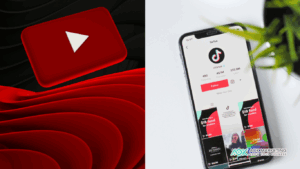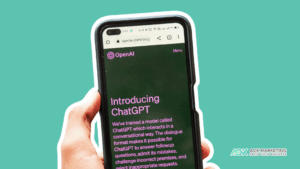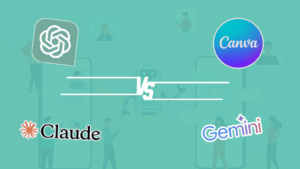Going viral is the ultimate goal for content creators, brands, and influencers alike. A viral moment can propel a brand into the spotlight, driving massive engagement, traffic, and even sales. But how do you create content that captures the collective attention of the internet? In this article, we’ll explore proven strategies to help your content go viral and generate widespread visibility.
Understanding the Psychology Behind Virality
Before diving into tactics, it’s important to understand why content goes viral. According to Jonah Berger, author of Contagious: How Things Catch On, viral content triggers emotions like awe, amusement, or surprise. When people feel strongly about something, they’re more likely to share it with others. Additionally, content that aligns with social currency, making people feel smart or “in-the-know,” encourages sharing.
In short, viral content:
-Evokes strong emotions (joy, surprise, anger, awe).
-Makes the sharer look good.
-Is easy to consume and share across platforms.

1. Craft Engaging, High-Quality Content
The foundation of going viral is creating content that resonates with your audience. Whether it’s a blog post, video, meme, or infographic, the content must be high-quality and engaging. To achieve this:
Keep it concise: Attention spans are short online. Get to the point quickly.
Visual appeal matters: Eye-catching visuals and graphics make people stop scrolling.
Authenticity wins: People crave real, unpolished moments. Don’t be afraid to show vulnerability or humor.
Optimize for Shareability
To increase the likelihood of your content being shared, make it easy for users to do so. Include clear social sharing buttons on your blog posts or articles. When creating videos or graphics, ensure they are optimized for mobile consumption, as the majority of users view content on mobile devices.
2. Capitalize on Trending Topics
One of the quickest ways to go viral is by jumping on current trends. When people are already talking about a particular subject, inserting your brand or content into the conversation can capture immediate attention.
How to Leverage Trends:
Monitor trending hashtags: Follow platforms like Twitter, Instagram, and TikTok to stay updated on what’s trending.
Use Google Trends: This tool helps you identify topics that are surging in popularity.
Create timely content: Whether it’s a meme, reaction video, or blog post, timing is crucial. Be fast but thoughtful in your response to trends.
For example, Wendy’s is known for leveraging social media trends and incorporating them into witty Twitter responses, often resulting in viral interactions.
3. Emotionally Driven Storytelling
Emotionally charged content is a potent tool for virality. Whether it’s a heartwarming story, an inspiring message, or a funny skit, emotions encourage people to share content with their friends and family. Storytelling can humanize your brand and create deeper connections with your audience.
Create Stories That:
Evoke strong feelings: Sad, funny, surprising, or inspiring content often gets shared the most.
Feature relatable characters: Stories with real people or experiences make viewers feel more connected.
Highlight an issue or solution: Stories that resonate with people’s struggles or offer solutions to problems tend to spread quickly.
For instance, the Always #LikeAGirl campaign succeeded by telling an emotionally charged story that resonated with viewers, leading to millions of shares.
4. Tap into User-Generated Content
Leveraging your audience to help create content can boost virality. User-generated content (UGC) often carries authenticity and credibility, which helps build trust and encourages sharing. Encourage your followers to create and share their own content that relates to your brand or campaign.
How to Encourage UGC:
Run contests: Incentivize your audience to create content by offering prizes.
Create branded hashtags: Like Coca-Cola’s #ShareACoke campaign, creating a hashtag that encourages users to share their own experiences can generate massive buzz.
Feature user content: Reposting or highlighting fan-generated content makes users feel valued and motivates others to participate.
By featuring user content, you also widen your content reach to new audiences through their personal networks.
5. Partner with Influencers
Collaborating with influencers can instantly increase the chances of your content going viral. Influencers have built-in audiences that trust them and are likely to engage with and share their content.
How to Collaborate with Influencers:
Find the right influencers: Look for influencers in your niche who align with your brand’s message and values.
Co-create content: Instead of just sponsoring an influencer’s post, work with them to create content that feels authentic to both their audience and your brand.
Leverage micro and macro influencers: While mega-influencers have large followings, micro-influencers often have higher engagement rates and more niche audiences.
6. Encourage Interactivity and Engagement
People are more likely to share content if they feel like they’re part of something. Interactive content—such as quizzes, polls, challenges, or live streams—can enhance user participation and build a community around your content.
Examples of Interactive Content:
Polls: Let users vote on their opinions or preferences.
Quizzes: Create fun, shareable quizzes that are relevant to your audience.
Challenges: Start a challenge that encourages your audience to participate. The viral Ice Bucket Challenge is a great example of how a simple idea can gain massive traction.
When users feel personally engaged, they are more likely to share the experience with their own social circles.
7. Use the Right Platforms
The platform you use can significantly impact your content’s viral potential. Not all content works well on all platforms. It’s essential to know where your target audience spends most of their time and tailor your content to that platform’s format.
Platform-Specific Tips:
TikTok: Short, punchy, creative videos often go viral on TikTok. Use trending sounds and challenges to boost visibility.
Instagram: High-quality visuals, reels, and stories work well on Instagram.
YouTube: Long-form content thrives on YouTube. Create tutorials, storytelling videos, or how-to guides.
Twitter: Witty, timely, and concise content is key on Twitter. Tweets with strong opinions, humor, or unique insights are more likely to go viral.
8. Promote Through Paid Media
Sometimes, a little boost from paid media can significantly increase your chances of going viral. Promoting content through platforms like Facebook, Instagram, or YouTube ads can help get your content in front of a larger audience, especially in its initial stages.
Tips for Paid Promotion:
Target the right audience: Use precise targeting options to reach users who are most likely to engage with your content.
Use short-form videos: Platforms like Instagram and TikTok prioritize short, engaging videos that drive interaction.
A/B testing: Test different headlines, visuals, and formats to see what resonates most with your audience.
Conclusion
Going viral isn’t purely about luck—it’s about creating the right content, understanding your audience, and leveraging the power of emotions, trends, and influencers. By following the strategies outlined in this guide, you’ll increase your chances of creating shareable content that resonates with your audience and, hopefully, makes its way into the hearts—and social feeds—of millions.
Remember, while virality can’t be guaranteed, consistency and creativity are key. Keep experimenting, analyzing, and refining your approach to find what works best for you.
About The Author
Dave Burnett
I help people make more money online.
Over the years I’ve had lots of fun working with thousands of brands and helping them distribute millions of promotional products and implement multinational rewards and incentive programs.
Now I’m helping great marketers turn their products and services into sustainable online businesses.
How can I help you?





